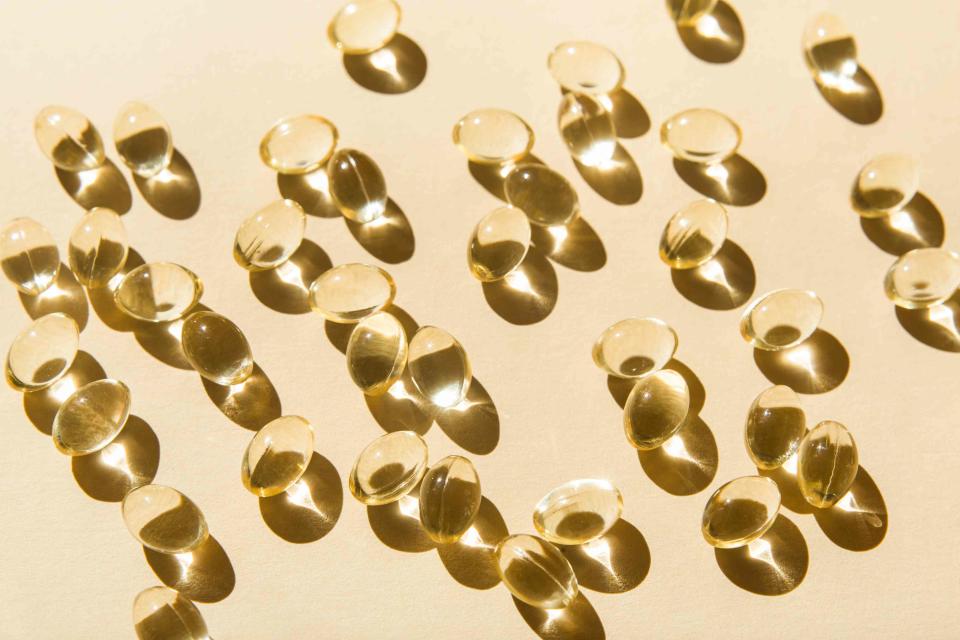Can You Die from Vitamin D Intoxication? Here’s What The Science Says.
Vitamin D is a necessary nutrient for many reasons—but can you take too much of it? What happens if you do?

Tanja Ivanova/Getty Images
Reviewed by Dietitian Jessica Ball, M.S., RD
Many people supplement with vitamin D, especially during the colder months when it’s more difficult to get your daily dose from sunlight (since your skin makes vitamin D with sufficient sunlight exposure). But can you take too much vitamin D? How do you know when it’s too much? And could you actually die from taking too much?
Related: The #1 Thing to Look For in a Vitamin D Supplement, According to Dietitians
What Is Vitamin D?
Vitamin D is a fat-soluble vitamin that’s necessary for good health in general but also for several specific functions in your body. You may have noticed that some milks tend to be fortified with vitamin D. This is because vitamin D helps your body absorb calcium, which is necessary to build strong bones. But that’s not all vitamin D is essential for.
Vitamin D also supports muscle and nerve function, heart health and immunity.
Certain conditions can precipitate vitamin D deficiency, including aging, osteoporosis, neurological diseases, malabsorption disorders, kidney and liver diseases, depression, pregnancy and rickets.
How Much Vitamin D Do You Need?
This amount depends on your age. According to the National Institutes of Health (NIH), amounts start at 25 mcg (1,000 IU) for newborns and go up to 100 mcg (4,000 IU) for adults. It’s important to note that these are recommended daily vitamin D intakes and include vitamin D from all sources—like food and beverages—not just supplements.
Your skin makes vitamin D when exposed to sunlight—but enough of your skin needs to be exposed and it needs to be for a long enough period. Even if you have enough skin exposure, certain things can shield your skin from absorbing enough sunlight, including pollution, sunscreen and melanin content (darker skin tends to not absorb sunlight as well as lighter skin, as darker skin provides protection from UV rays). Even what latitude you’re at and what season it is will influence your UV absorption and vitamin D production, per a 2023 review in Cureus.
According to a 2022 review in Frontiers in Nutrition, sun exposure for adequate vitamin D production might be less than you think. Research suggests you can get enough vitamin D by exposing your arms and legs to sunlight (without clothing or sunscreen) at mid-day (between 10 a.m. and 4 p.m.) for 5-30 minutes at least twice a week.
Besides sunlight and supplements, vitamin D is also found in some foods. It naturally occurs in egg yolks, mushrooms that have been exposed to UV light and fatty fish like salmon, tuna and sardines. Some foods are also fortified with vitamin D, including milk, cereal and juice.
Can You Die From Too Much Vitamin D?
The short answer is yes, you can die from too much vitamin D.
According to a 2020 study in the Brazilian Journal of Nephrology, many cases of vitamin D toxicity start as vitamin D deficiency. In analyzing the data, researchers found that people who were deficient in vitamin D—or presumed to be deficient based on living in colder regions—took vitamin D supplements in doses that were higher than what is recommended. Or the dose they supplemented with, combined with foods containing vitamin D, put them over the limit.
Typically this type of toxicity happens over time, as opposed to overdosing all at once with the vitamin. “Unlike other vitamins, vitamin D acts like a hormone, so an excess of it in your body can lead to other health problems, such as hypercalcemia (high levels of calcium in your blood),” explains Maria Laura Haddad-Garcia, Senior Nutrition & News Editor at EatingWell. “This build-up of vitamin D in your body may happen when you take very high doses of vitamin D for several months. Additionally, since vitamin D is fat-soluble, your body can't get rid of it like it does with water-soluble vitamins.”
It’s important to note that vitamin D toxicity does not occur with sun exposure, as the body limits how much vitamin D it makes from UV light, per the NIH. With that said, too much sun exposure carries other risks, including sunburn and skin cancer, so it’s still important to take proper precautions to avoid these risks. Keep in mind, though, that for the body to produce enough vitamin D, you do need some sun exposure sans sunscreen.
Warning Signs of Vitamin D Toxicity
Before vitamin D toxicity occurs, there are warning signs. According to the NIH, these include:
Nausea
Vomiting
Muscle weakness
Confusion
Pain
Loss of appetite
Dehydration
Excessive urination
Thirst
Kidney stones
If it’s not caught in time, vitamin D toxicity can progress to kidney failure, irregular heartbeat and eventually, death.
If you’re taking vitamin D and are experiencing any of the warning signs, it’s important to stop supplementing and see your healthcare practitioner.
The Bottom Line
Vitamin D is a necessary nutrient for many functions in our bodies and for overall good health. And like anything else, too much of a good thing is too much. If you’re already supplementing with vitamin D or wondering if you should be, the surest way to know if you’re on target is to request bloodwork from your healthcare practitioner to see where your vitamin D level is currently at.
Ultimately, the best way to get vitamin D is through sufficient safe sun exposure and foods that contain vitamin D. Egg yolks, mushrooms, fatty fish and fortified milk provide vitamin D plus a host of other nutrients that are necessary for good health. Recipes, like our Mushroom-Spinach Eggs Benedict and Salmon with Sun-Dried Tomato Cream Sauce, are a good place to start.
Read the original article on Eating Well.

